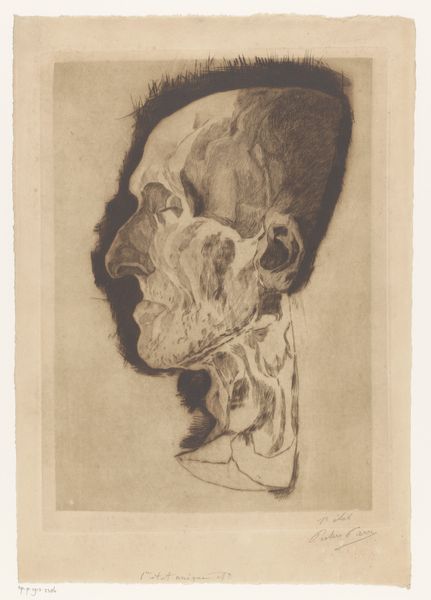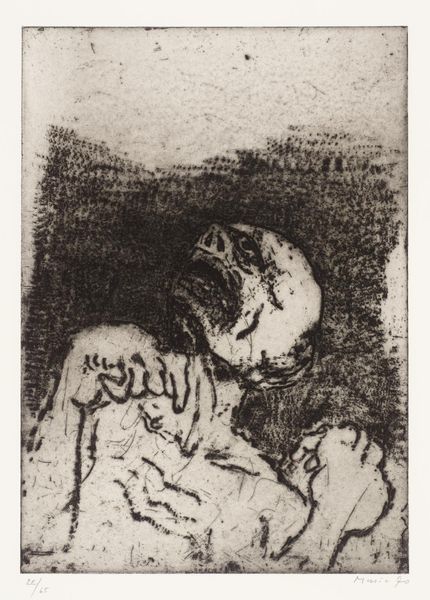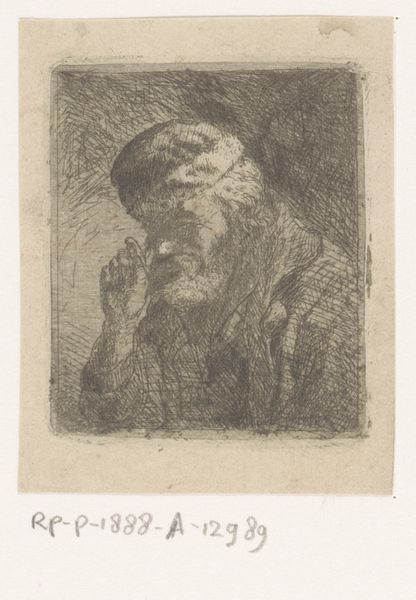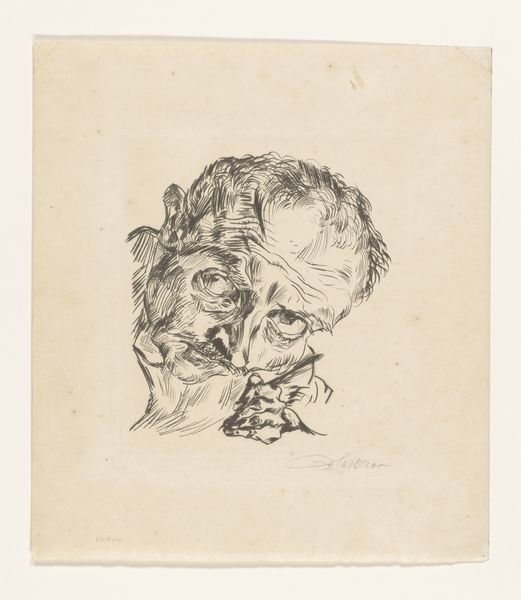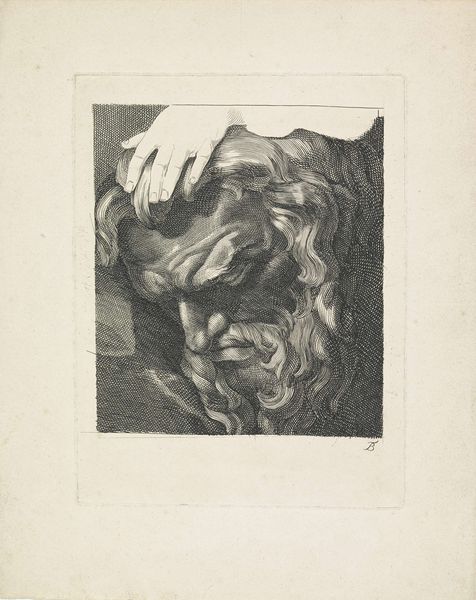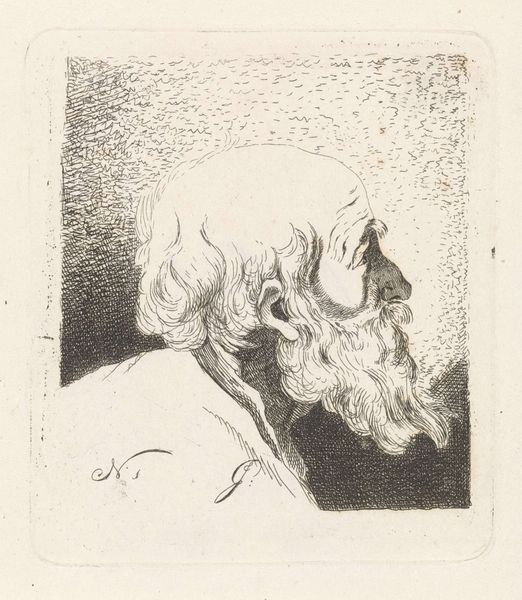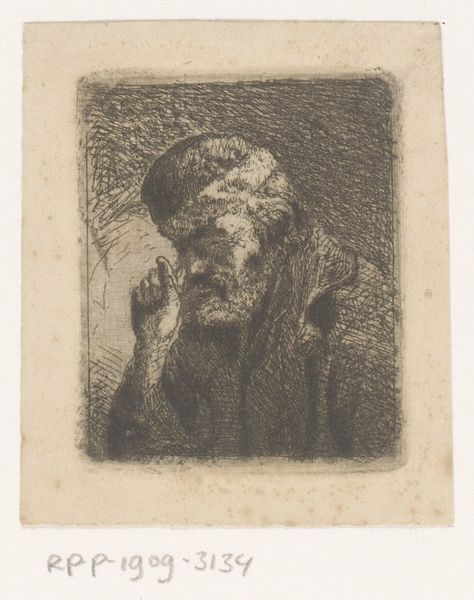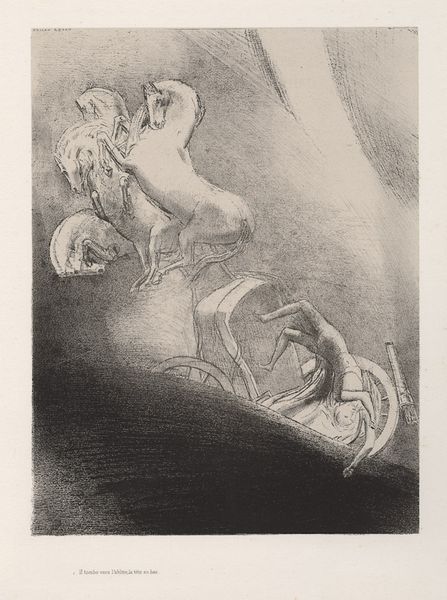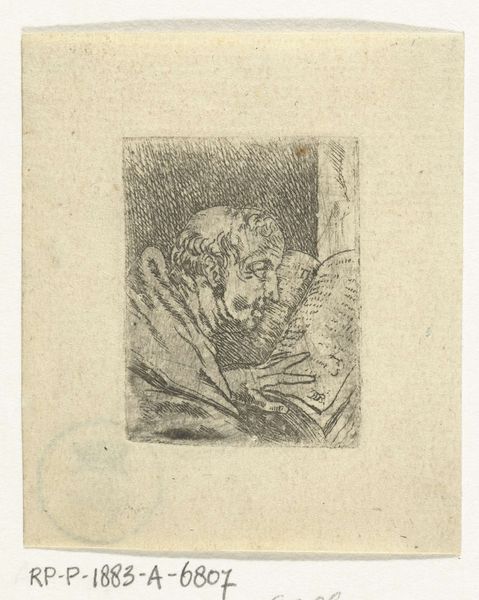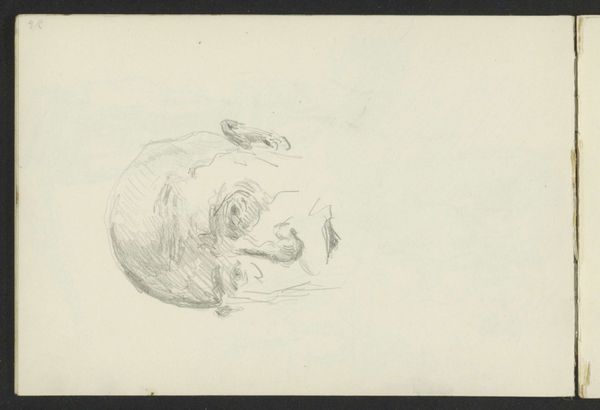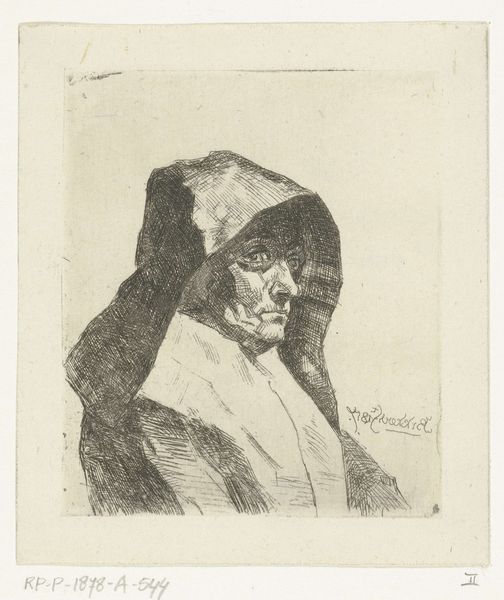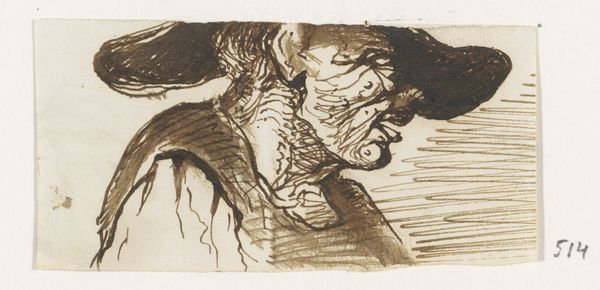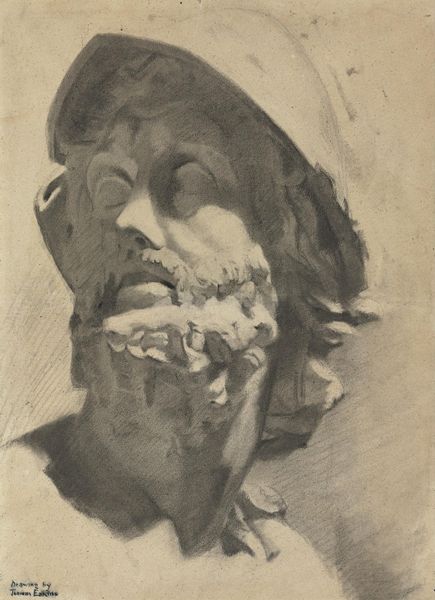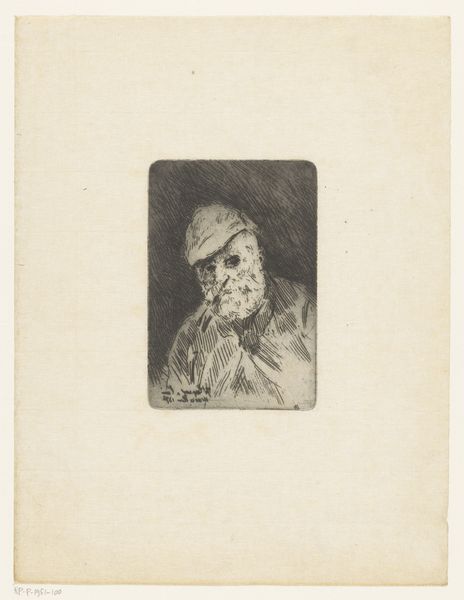
print, engraving
#
portrait
#
baroque
#
dutch-golden-age
# print
#
engraving
#
realism
Dimensions: height 124 mm, width 99 mm
Copyright: Rijks Museum: Open Domain
Curator: Let’s consider this engraving, “Hoofd van een kale man, en profile” (“Head of a bald man, in profile”) from between 1672 and 1711, credited to Augustinus Terwesten and residing at the Rijksmuseum. The realism is striking. Editor: It’s definitely commanding! Even in this small format, there is a powerful, stoic air created by the upward gaze and strong lines defining the figure's features. Curator: Indeed. Look at how the hatching technique creates areas of light and shadow, giving volume to the head and neck. The use of line weight is strategic, defining the contours of the face and emphasizing the wrinkled skin. It's pure Baroque drama. Editor: Speaking of skin, the sheer texture achieved here through the engraving process! The artist's labor—consider the hours spent meticulously carving those tiny lines—is remarkable. What was the status of printmakers during the Dutch Golden Age? Curator: Engraving in that period wasn't just reproductive; it was often considered a high art form. Note the detail around the eye sockets and cheekbones: Terwesten masterfully employs line variation to communicate bone structure beneath the skin, but within a larger Dutch portraiture context that valued social representation. Editor: How might we situate that high art within a wider circle of making? Consider the paper, the ink, the printing press, all these various skilled laborers that were involved in this whole chain of creation. Curator: Certainly. It's not just about artistic genius but collaborative labor within a well-defined material and social infrastructure. The print medium democratized images to some extent, but still within the confines of specific societal parameters. Editor: Yes, but I wonder if there's also a subtle commentary here on the dignity of labor as communicated via portraiture. A man rendered beautifully despite his baldness, age, and probable profession, which we do not know. Curator: Intriguing point. By concentrating so intensely on the head's formal features and internal tensions, one runs the danger of missing the human element it reveals. Editor: I find the way the artwork materializes human stories to be quite powerful; something about its existence provokes consideration. Curator: Thank you, that’s wonderfully insightful.
Comments
No comments
Be the first to comment and join the conversation on the ultimate creative platform.
